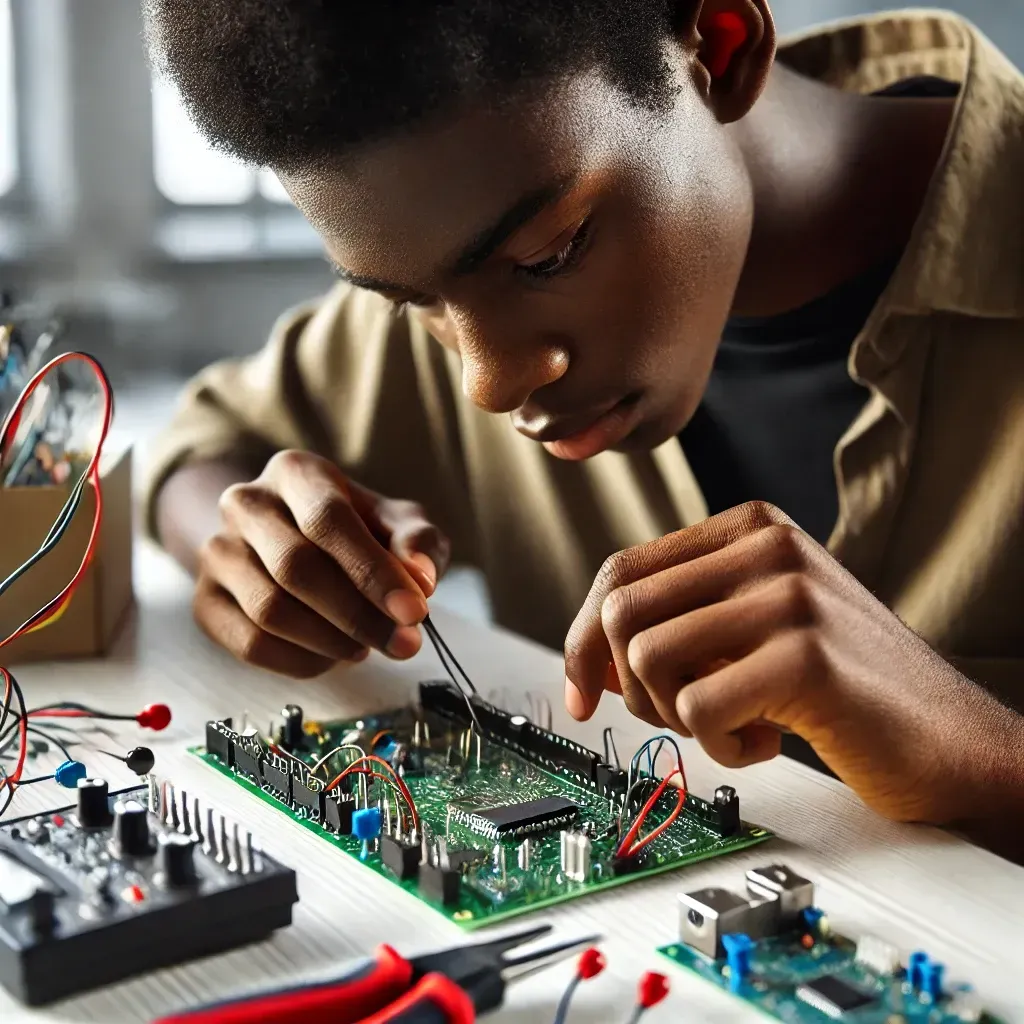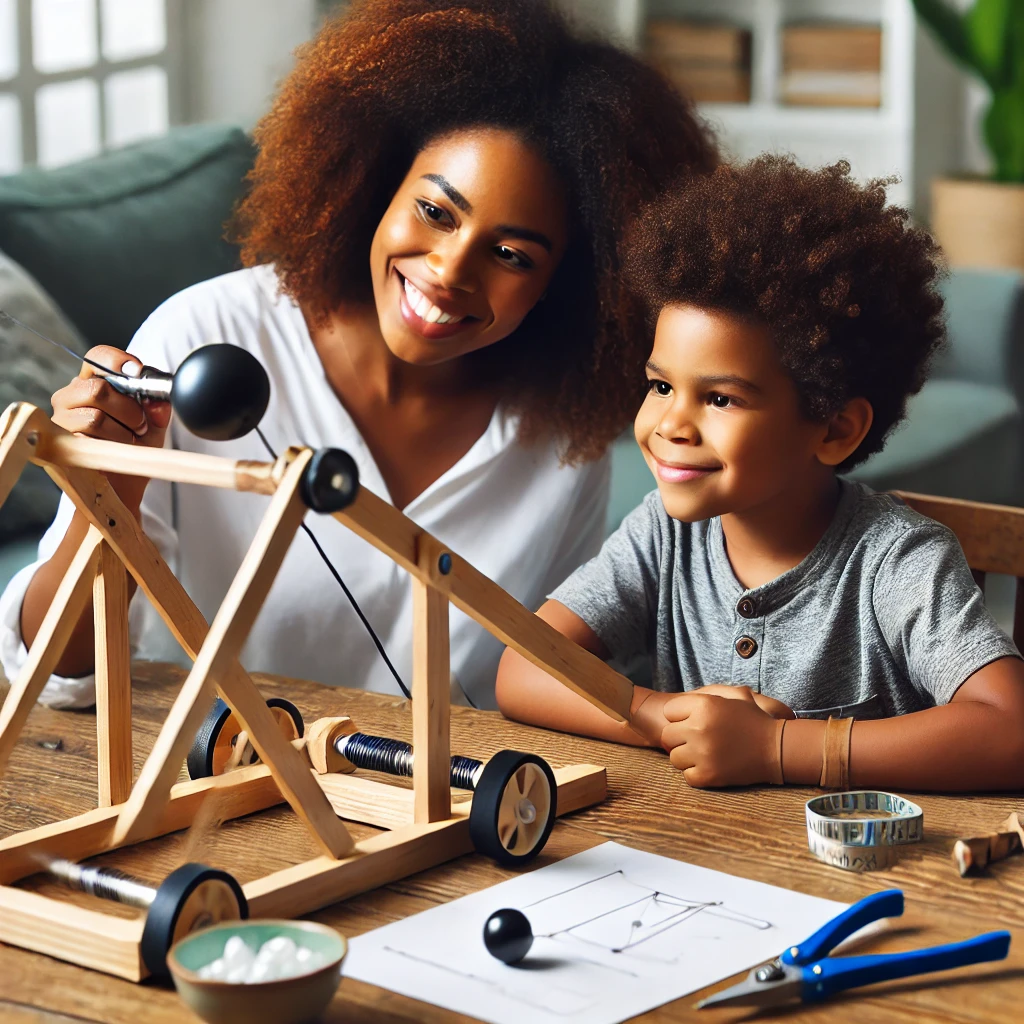
10 Exciting STEM Activities for Kids That Make Learning Fun
STEM (Science, Technology, Engineering, and Math) is the foundation of modern innovation, but many kids see it as difficult or boring. The secret to making STEM engaging? Hands-on, fun activities that bring learning to life!
When kids explore STEM through experiments, building projects, and interactive games, they develop problem-solving skills, creativity, and a love for discovery—without even realizing they’re learning.

✅ Encourages curiosity, exploration, and problem-solving
✅ Helps kids understand real-world applications of STEM
✅ Builds confidence in science, math, and technology
✅ Turns learning into an adventure, not a chore
In this blog, we’ll explore 10 exciting STEM activities that make learning fun and help kids develop a lifelong love for science and innovation!
1. Make Your Own Volcano (Chemistry & Geology)
Nothing gets kids more excited about science than an exploding volcano! This classic activity teaches chemical reactions, pressure, and geological formations.
✅ What You Need:
Baking soda
Vinegar
Dish soap
Red food coloring
A plastic bottle
Modeling clay or paper mâché (for the volcano shape)
How It Works:
Build a volcano shape around a plastic bottle using clay or paper mâché.
Fill the bottle halfway with baking soda.
Add a few drops of dish soap and red food coloring for effect.
Pour vinegar into the bottle and watch the lava eruption!
💡 STEM Lesson: The reaction between baking soda (a base) and vinegar (an acid) creates carbon dioxide gas, which causes the eruption!
2. Coding a Simple Game (Technology & Logic)
Introducing kids to basic coding is an amazing way to teach problem-solving, sequencing, and logic—all critical STEM skills.
✅ What You Need:
A computer or tablet
A free coding platform like Scratch (scratch.mit.edu)
How It Works:
Go to Scratch and create a new project.
Use block-based coding to make a simple game (like making a cat chase a mouse).
Experiment with commands, loops, and motion blocks to make the game interactive.
💡 STEM Lesson: Coding teaches logical thinking, creativity, and problem-solving—key skills for future tech careers!
3. Build a LEGO Bridge (Engineering & Physics)
Want to teach kids about structures, balance, and forces? Try a LEGO bridge-building challenge!
✅ What You Need:
LEGO bricks (or popsicle sticks & glue)
A small toy car to test weight
How It Works:
Challenge your child to build a bridge that can hold the toy car.
Test different designs to see which structure is strongest and most stable.
Discuss what shapes (arches, triangles, beams) make the bridge stronger.
💡 STEM Lesson: Engineers design real bridges using physics, balance, and force distribution to make them sturdy.
4. DIY Slime Experiment (Chemistry & Polymers)
Kids love slime, and making it at home is a great way to explore chemical reactions and polymer science.
✅ What You Need:
½ cup white glue
½ teaspoon baking soda
1 tablespoon contact lens solution
Food coloring (optional)
How It Works:
Mix glue and baking soda in a bowl.
Add food coloring for fun.
Slowly add contact lens solution while stirring until it becomes stretchy slime.
💡 STEM Lesson: Slime is a polymer, meaning it has properties of both solids and liquids. The chemical reaction makes it stretchy and moldable.
5. Grow a Crystal Garden (Geology & Chemistry)
Growing homemade crystals is a fascinating way to explore how minerals form in nature.
✅ What You Need:
Epsom salt (or borax)
Water
A glass jar
Pipe cleaners
String
How It Works:
Boil water and mix in Epsom salt until it won’t dissolve anymore.
Shape a pipe cleaner into a design and hang it in the jar.
Leave it undisturbed for a day—watch crystals grow!
💡 STEM Lesson: Crystals form when liquid solutions cool down, and molecules arrange in repeating patterns.
6. Balloon Rocket (Physics & Motion)
A balloon-powered rocket is an exciting way to teach kids about motion, thrust, and Newton’s Third Law.
✅ What You Need:
A long string
A straw
Tape
A balloon
How It Works:
Thread the string through the straw and tape it to a table or wall.
Blow up the balloon but don’t tie it—attach it to the straw with tape.
Release the balloon and watch it rocket across the string!
💡 STEM Lesson: The air rushing out creates an opposite reaction, propelling the balloon forward—just like real rockets!
7. Floating Paperclip (Magnetism & Physics)
This simple experiment demonstrates the power of magnetic fields in a fun way.
✅ What You Need:
A strong magnet
A paperclip
A string
How It Works:
Tie the paperclip to one end of the string.
Hold the magnet above the paperclip without touching it and slowly move it up.
The paperclip will “float” in the air, held by the invisible magnetic force!
💡 STEM Lesson: Magnets create invisible forces (magnetic fields) that attract or repel certain materials.
8. Solar-Powered Oven (Renewable Energy & Engineering)
Teach kids about solar energy by making a DIY solar oven to melt chocolate or cook a s’more!
✅ What You Need:
A shoebox
Aluminum foil
Plastic wrap
Black construction paper
How It Works:
Line the shoebox with black paper to absorb heat.
Cover the inside lid with aluminum foil to reflect sunlight.
Stretch plastic wrap over the top to trap heat.
Place chocolate & marshmallows inside and let the sun cook your s’more!
💡 STEM Lesson: Solar ovens use sunlight, reflection, and trapped heat to cook food—just like real solar panels!
9. Make a Rainbow with Water (Optics & Light Science)
Teach kids about light refraction by creating a rainbow using just a glass of water and sunlight.
✅ What You Need:
A glass of water
A white piece of paper
A sunny window
How It Works:
Fill a glass with water and place it near a sunny window.
Hold the white paper behind it.
Move the paper around until you see a rainbow appear!
💡 STEM Lesson: Water bends and splits light into different colors, just like a prism.
10. DIY Hovercraft (Air Pressure & Physics)
Let kids build their own hovercraft and explore air pressure and friction!
✅ What You Need:
A CD
A balloon
A plastic bottle cap
How It Works:
Glue the bottle cap to the center of the CD.
Blow up the balloon, attach it to the cap, and release it.
The hovercraft will glide smoothly across a surface!
💡 STEM Lesson: The air reduces friction, making the CD hover over the surface.
🚀 Make STEM Fun with the Chase Noah STEM Book! 🚀
📚 Hands-on experiments, real-world applications, and exciting activities.
🔬 Perfect for young scientists and future innovators!
👉 Click here to buy now!
🔗 www.childrentowealth.com/product-details/product/chasenoahstem
STEM learning starts today—turn play into discovery! 🚀🔬
